Peugeot Partner vs Toyota Proace City – Which car suits you better?
Two cars, one duel: Peugeot Partner meets Toyota Proace City.
Which one wins in performance, efficiency and value for money? Find out now!
Costs and Efficiency:
Price and efficiency are often the first things buyers look at. Here it becomes clear which model has the long-term edge – whether at the pump, the plug, or in purchase price.
Toyota Proace City has a hardly perceptible advantage in terms of price – it starts at 20800 £, while the Peugeot Partner costs 22400 £. That’s a price difference of around 1591 £.
Fuel consumption also shows a difference: Peugeot Partner manages with 5.20 L and is therefore hardly perceptible more efficient than the Toyota Proace City with 5.30 L. The difference is about 0.10 L per 100 km.
In terms of energy consumption, the advantage goes to the Peugeot Partner: with 17.40 kWh per 100 km, it’s barely noticeable more efficient than the Toyota Proace City with 18.10 kWh. That’s a difference of about 0.70 kWh.
As for range, the Peugeot Partner performs minimal better – achieving up to 354 km, about 11 km more than the Toyota Proace City.
Engine and Performance:
Power, torque and acceleration say a lot about how a car feels on the road. This is where you see which model delivers more driving dynamics.
Both models deliver identical power – 136 HP each.
In acceleration from 0 to 100 km/h, the Peugeot Partner is minimal quicker – completing the sprint in 11.20 s, while the Toyota Proace City takes 11.50 s. That’s about 0.30 s faster.
In terms of top speed, the Toyota Proace City performs hardly perceptible better – reaching 186 km/h, while the Peugeot Partner tops out at 183 km/h. The difference is around 3 km/h.
Both models offer the same torque – 300 Nm.
Space and Everyday Use:
Cabin size, boot volume and payload all play a role in everyday practicality. Here, comfort and flexibility make the difference.
Seats: Toyota Proace City offers evident more seating capacity – 7 vs 5.
In curb weight, Peugeot Partner is barely noticeable lighter – 1329 kg compared to 1366 kg. The difference is around 37 kg.
In terms of boot space, the Peugeot Partner offers clearly more room – 1800 L compared to 912 L. That’s a difference of about 888 L.
In maximum load capacity, the Peugeot Partner performs distinct better – up to 4000 L, which is about 1307 L more than the Toyota Proace City.
When it comes to payload, Peugeot Partner slightly takes the win – 991 kg compared to 869 kg. That’s a difference of about 122 kg.
Who comes out on top?
Overall, the Peugeot Partner shows itself to be leaves the rival little chance and secures the title of DriveDuel Champion.
It convinces with the more balanced overall package and proves to be the more versatile choice for everyday use.
Peugeot Partner
Peugeot Partner
The Peugeot Partner is a versatile and practical vehicle, ideal for both urban and rural settings. Its spacious interior and adaptable seating make it a popular choice for families and businesses alike. With a focus on reliability and efficiency, the Partner is well-suited to meet the demands of everyday transport.
detailsToyota Proace City
The Toyota Proace City High Roof Combi is designed to seamlessly blend practicality with comfort, making it an ideal choice for families and businesses alike. Its versatile interior allows for flexible seating and cargo arrangements, catering to a variety of transport needs. Equipped with modern technology and advanced safety features, this vehicle ensures a reliable and secure driving experience.
details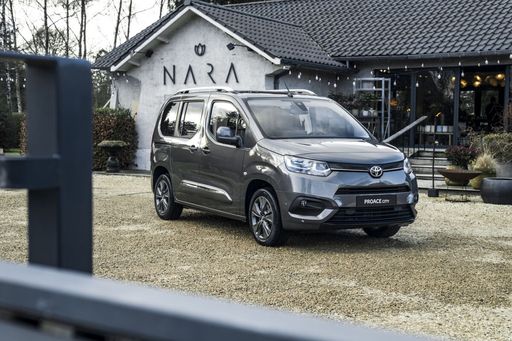 @ Toyota Deutschland
@ Toyota Deutschland
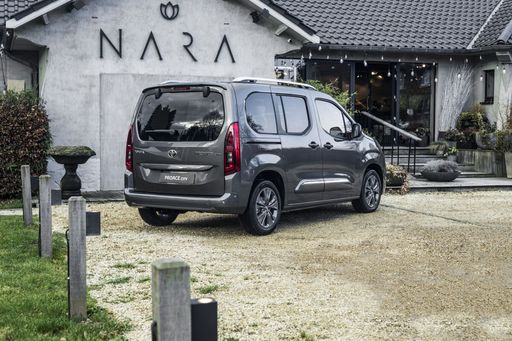 @ Toyota Deutschland
@ Toyota Deutschland
 @ Toyota Deutschland
@ Toyota Deutschland
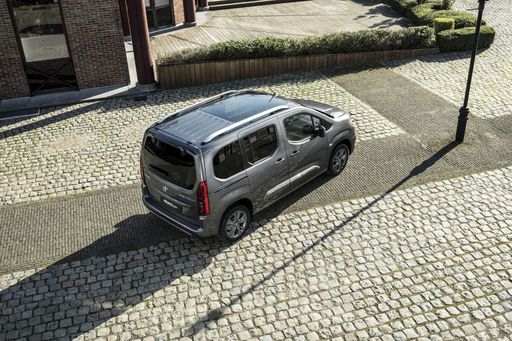 @ Toyota Deutschland
@ Toyota Deutschland
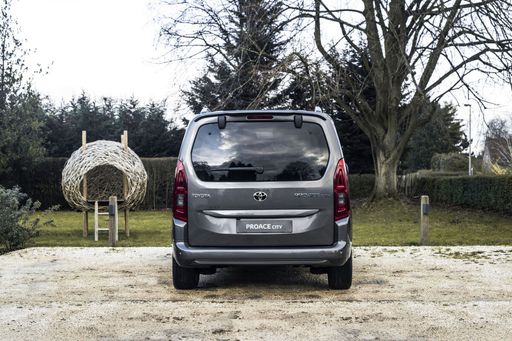 @ Toyota Deutschland
@ Toyota Deutschland
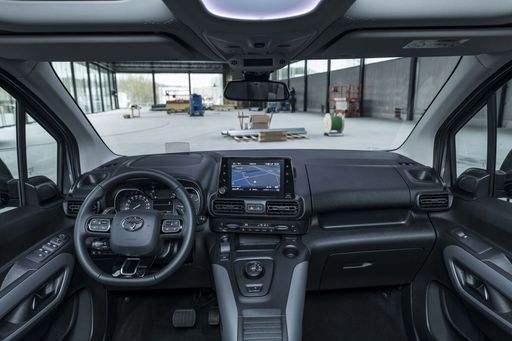 @ Toyota Deutschland
@ Toyota Deutschland

|
|
|
|
|
Costs and Consumption |
|
|---|---|
|
Price
22400 - 33800 £
|
Price
20800 - 44100 £
|
|
Consumption L/100km
5.2 - 6.3 L
|
Consumption L/100km
5.3 - 6.3 L
|
|
Consumption kWh/100km
17.40 kWh
|
Consumption kWh/100km
18.10 kWh
|
|
Electric Range
354 km
|
Electric Range
343 km
|
|
Battery Capacity
-
|
Battery Capacity
-
|
|
co2
0 - 143 g/km
|
co2
0 - 146 g/km
|
|
Fuel tank capacity
53 - 61 L
|
Fuel tank capacity
50 - 61 L
|
Dimensions and Body |
|
|---|---|
|
Body Type
Cargo Van
|
Body Type
High Roof Estate
|
|
Seats
2 - 5
|
Seats
5 - 7
|
|
Doors
4 - 5
|
Doors
4 - 5
|
|
Curb weight
1329 - 1813 kg
|
Curb weight
1366 - 1664 kg
|
|
Trunk capacity
1800 L
|
Trunk capacity
322 - 912 L
|
|
Length
4403 - 4753 mm
|
Length
4401 - 4751 mm
|
|
Width
1848 mm
|
Width
1848 mm
|
|
Height
1796 - 1812 mm
|
Height
1812 - 1818 mm
|
|
Max trunk capacity
3300 - 4000 L
|
Max trunk capacity
2126 - 2693 L
|
|
Payload
611 - 991 kg
|
Payload
525 - 869 kg
|
Engine and Performance |
|
|---|---|
|
Engine Type
Electric, Diesel, Petrol
|
Engine Type
Petrol, Diesel, Electric
|
|
Transmission
Automatic, Manuel
|
Transmission
Manuel, Automatic
|
|
Transmission Detail
Reduction Gearbox, Manual Gearbox, Automatic Gearbox
|
Transmission Detail
Manual Gearbox, Reduction Gearbox, Automatic Gearbox
|
|
Drive Type
Front-Wheel Drive
|
Drive Type
Front-Wheel Drive
|
|
Power HP
102 - 136 HP
|
Power HP
102 - 136 HP
|
|
Acceleration 0-100km/h
11.20 s
|
Acceleration 0-100km/h
11.5 - 13.2 s
|
|
Max Speed
135 - 183 km/h
|
Max Speed
135 - 186 km/h
|
|
Torque
205 - 300 Nm
|
Torque
205 - 300 Nm
|
|
Number of Cylinders
3 - 4
|
Number of Cylinders
3 - 4
|
|
Power kW
75 - 100 kW
|
Power kW
75 - 100 kW
|
|
Engine capacity
1199 - 1499 cm3
|
Engine capacity
1199 - 1499 cm3
|
General |
|
|---|---|
|
Model Year
2024 - 2025
|
Model Year
2024 - 2025
|
|
CO2 Efficiency Class
A, E
|
CO2 Efficiency Class
E, A
|
|
Brand
Peugeot
|
Brand
Toyota
|
Is the Peugeot Partner offered with different drivetrains?
Available configurations include Front-Wheel Drive.
The prices and data displayed are estimates based on German list prices and may vary by country. This information is not legally binding.
